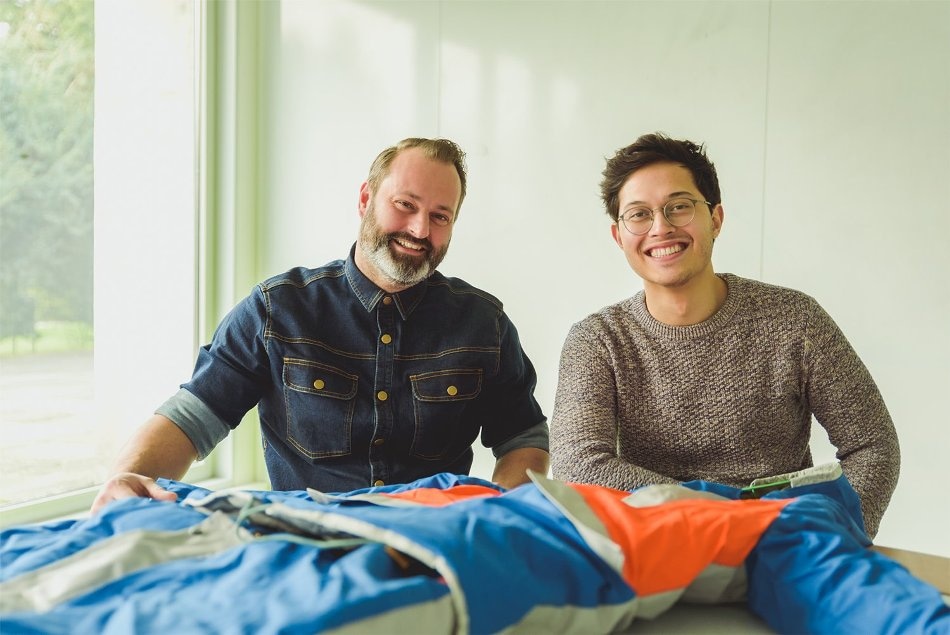Mar 30 2018
Researchers are working toward upgrading the Sheltersuit—a windproof and water repellent suit with a detachable sleeping bag for the homeless and refugees.
The Sheltersuit Foundation, the Saxion Smart Functional Materials, and DesignLab University of Twente will be taking the help of electronics to modify the suit into an “Urban Safety Kit.” They are working on this within the framework of WEAR Sustain, an EU Horizon 2020 project that has awarded €50,000 to the collaborators for research and development.
 Image credit: University of Twente
Image credit: University of Twente
The original Sheltersuit’s concept was developed by Bas Timmer, a designer from Twente who founded the Sheltersuit Foundation in 2014 when a father of two of his friends had passed away in the streets due to hypothermia. Ever since, globally, more than 1800 Shelter Suits have been manufactured and handed over to the needy, including at the Kara Tepe camp on the Greek island of Lesbos.
At present, the further advancement of the suit will focus on the practical difficulties that the homeless people face, including restricted access to phone charging points, the risk of hypothermia, and unsafe situations while sleeping. Anyone who ‘has to sleep outdoors in the cold streets of the city’ can use it, stated Edo de Wolf, Project Coordinator for DesignLab. “It is also conceivable that you use this suit to accommodate refugees, just like the original Sheltersuit.”
Versatile
DesignLab unites researchers and students from different disciplines to take part in the project to create and investigate an electronic module. The Saxion lectorate Smart Functional Materials will offer its expertise in the area of smart textiles, whereas Sheltersuit will focus on the production line and business model.
Apart from electronics, the “Urban Safety Kit” will also include materials such as tent cloth, contributed by prominent textile companies from Twente such as TenCate Outdoor Fabrics, and also other organizations across Europe. “A good example of circular design,” stated Jurrie Barkel, Sheltersuit’s Treasurer.
The answer to that is as multilayered as the issue itself. In any case, the suits provide an instant and immediately applicable short-term solution. Whether it works in the long term, will depend on its user and his or her situation. For me, this project is certainly very special because it gives us the opportunity to make a difference for a good social cause.
Edo de Wolf
Kick-Off
The timeframe to complete the Urban Safety Kit project is six months, that is, from April to September 2018. The collaborators are confident prototype suits will be tested and ready for distribution by the fall of 2018. The project will be officially started on March 23, 2018, at the University of the Arts in Berlin during the WEAR Sustain Induction Day.